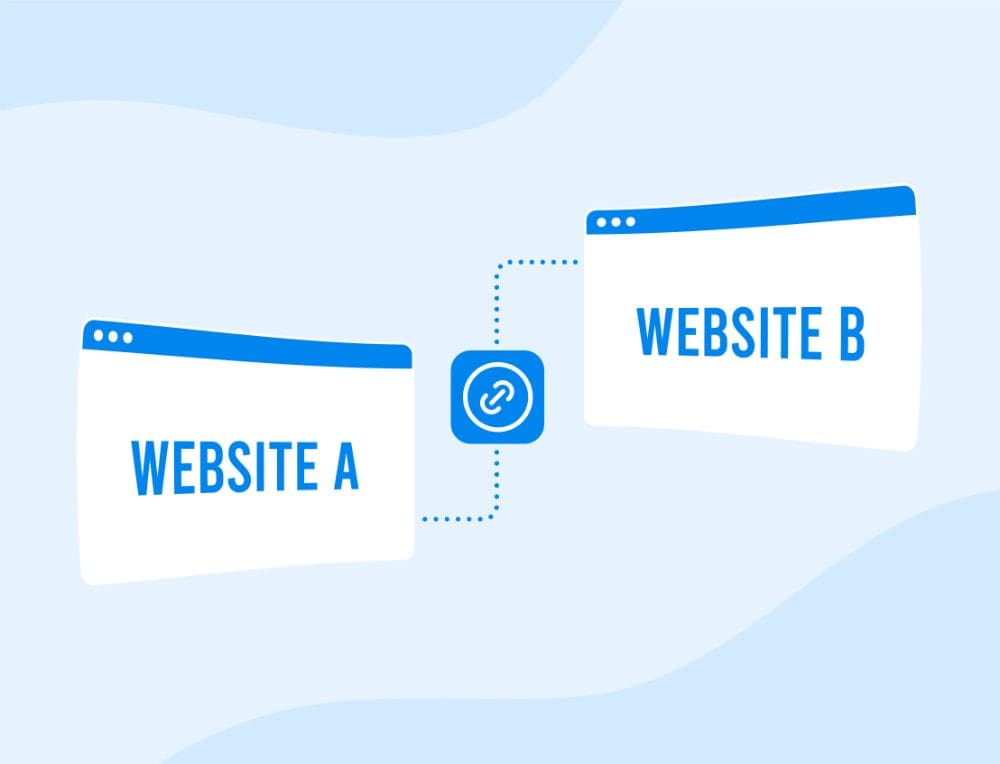Disclosure: This post contains affiliate links, including Amazon Affiliate Associate links, through which I earn from qualifying purchases at no extra cost to you. I only recommend products I genuinely believe in. Visit my Privacy Policy page for more information.
I have been an SEO for over 15 years, and one thing critical for anyone new to Search Engine Optimisation (SEO) is to understand and master anchor text. Mistakes in this area can be fatal for your websites and search rankings.
This clickable text, typically highlighted in a different colour or underlined, acts as a bridge that directs users from one web page to another. The words used in this text can profoundly impact your SEO efforts, making the mastery of anchor text best practices essential.
This comprehensive guide delves into the world of anchor text, covering everything from its importance to the best practices involved.

Anchor text is key to SEO success. It impacts search rankings and user experience. The guide advises a balanced mix of anchor text types to avoid search engine penalties. Key takeaways include the importance of relevance, avoiding over-optimisation, and the need for diversity in your anchor text profile.
Introduction to Anchor Text
Anchor text is the visible and clickable text in a hyperlink. It generally appears underlined and highlighted in a different colour, usually blue, indicating to users that it is clickable. For instance, if you see “best SEO practices” in a sentence, “best SEO practices” is the anchor text.
Explaining Anchor Text with HTML Code
In HTML coding, anchor text appears within the ‘a’ tags. For instance, in the code <a href=”https://seo.com”>best SEO practices</a>, “best SEO practices” is the anchor text.
This text is what users see and click on, while the URL within the ‘href’ attribute is where they are directed upon clicking.
The Importance of Anchor Text for SEO
Anchor text is vital in SEO for several reasons. Firstly, search engines like Google use anchor text to understand the content and context of the linked page, which informs their indexing.
Secondly, well-crafted anchor text enhances the user experience by providing clear, descriptive links to additional relevant content. Here are two key benefits of using anchor text effectively:
Increased Link Juice (Backlink Value)
“Link juice” is an SEO term referring to the value or equity passed from one page or site to another through links. Google uses anchor text to determine the relevance of a link, thereby contributing to the link juice of the linked page.
The right anchor text can significantly enhance this, improving your page’s search engine rankings.
Enhanced Clickability
Anchor text that is descriptive and relevant is more attractive to users, making links more clickable. This direct traffic and engagement can improve sales and conversion rates and enhance SEO signals due to increased user interaction.
Evolution of Anchor Text in SEO

Anchor text has experienced several shifts since the dawn of search engines, particularly concerning its use in SEO.
In the early 2000s, keyword-rich anchor text was considered an SEO best practice. SEOs would create multiple links using the exact match anchor text related to the page they were linking to, intending to exploit the Google algorithm.
However, this approach often resulted in a poor user experience, as the anchor text could appear spammy and out of place.
Recognising these issues, Google released the first Penguin update in April 2012. This update penalised sites that over-optimised their anchor text with exact match keywords, causing a significant shift in SEO practices.
Today, the focus is on creating user-friendly and contextually relevant anchor text.
Understanding Anchor Text Ratio
The anchor text ratio refers to the proportion of different types of anchor text used on a website. Maintaining a natural and diverse anchor text ratio is vital, as an unnaturally high frequency of one type (exact match anchor text) can raise red flags for search engines, potentially leading to penalties.
Anchor Text Keyword Density
Much like the keyword density on a webpage, anchor text keyword density refers to the frequency of a keyword appearing in the anchor text.
A higher density can potentially signal keyword stuffing, an outdated and frowned upon SEO tactic. It’s critical to strike a balance, ensuring your anchor text is keyword-rich but not overly so.
The Impact of Anchor Text Variation
A healthy variation in anchor text types can enhance your SEO efforts. It creates a natural link profile more likely to pass search engine scrutiny, especially since Google’s algorithms have grown increasingly sophisticated at detecting unnatural or manipulative linking practices.
The Necessity of Diversifying Your Anchor Text

Diversifying your anchor text is crucial for avoiding over-optimisation penalties and maintaining a natural link profile.
A mix of exact match, partial match, branded, and generic anchor text can create a balanced and diverse anchor text profile.
Exploring Different Types of Anchor Text
There are several types of anchor text, each serving a unique purpose in your SEO strategy. Here are the main ones you should be familiar with:
1. Branded Anchor Text
Branded anchor text uses a brand name as the anchor text. It helps cite sources or link directly to another website. For instance, “Check out our latest blog on SEO Marketing Mastery” is an example of branded anchor text.
2. Exact Match Anchor Text
Exact match anchor text includes a keyword that mirrors the page it’s linking to. For example, ‘SEO practices‘ links to a page about SEO practices. While powerful, using this type sparingly is essential to avoid over-optimisation.
3. Partial Match Anchor Text
Partial match anchor text includes a variation of the keyword on the linked-to page. For instance, ‘best SEO strategies’ links to a page about SEO practices.
4. Generic Anchor Text
Generic anchor text uses a generic word or phrase like “click here” or “learn more”. While not particularly informative, it’s often used to encourage users to click on a link.
5. Naked Link Anchor Text
Naked link anchor text is simply a URL used as an anchor, such as ‘https://seomarketingmastery.com/‘. While it can look untidy, it’s sometimes necessary, depending on the context.
SEO Strategies for Optimising Anchor Text

Optimising your anchor text is more of an art than a science. It requires a delicate balance between incorporating relevant keywords for SEO and crafting user-friendly, contextually relevant text. Here are some strategies to keep in mind:
1. Ensure Anchor Text Relevance
Relevant anchor text helps search engines understand your site structure and can improve your website’s rankings. It also looks more natural to your readers, increasing their likelihood of clicking on the link.
2. Avoid Over-Optimising Anchor Text
While it’s essential to include keywords in your anchor text, overdoing it can lead to penalties. Aim for a natural, varied mix of anchor text types and keep keyword use reasonable.
3. Pay Attention to Surrounding Text
The text surrounding your anchor text can lend further context to the linked page, aiding user understanding and search engine indexing. Ensure the surrounding text is relevant and complements the anchor text.
4. Audit Your Website for Broken Anchor Text Links
Broken links can harm your website’s user experience and SEO. Regularly auditing your website can help you identify and fix broken anchor text links, keeping your site running smoothly.
In conclusion, mastering the art of anchor text is a vital aspect of off-site SEO. By understanding its importance, knowing the different types, and implementing the best practices, you can enhance your website’s SEO performance and user experience.
Remember, the key is to strike a balance – your anchor text should be SEO-friendly and user-friendly. You can optimise your anchor text with careful planning and a strategic approach for maximum impact.
Case Study – Anchor Text Best Practices
The keywords used are examples of keywords from this post to give a visual overview.
Case Study: The Risks of Overusing Exact Match Anchor Text
The Situation
An example of a website’s backlink profile is visualised through this chart. On the surface, it seemed like a straightforward overview of keyword usage. However, a closer inspection revealed a glaring issue: the “Anchor Text” keyword, which is an exact match, is dangerously high as the side of other keywords. This overshadowed other types of anchor text like “Exact Match,” “Partial Match,” and “Generic.”
The Red Flag
Why is this a big deal, you wonder? Google’s algorithms are more sophisticated than ever. They’re designed to spot unnatural backlink profiles, and one of the giant red flags is an over-reliance on exact match anchor text. In our example, the “Anchor Text” keyword accounted for 25 out of the total backlinks in yellow. That’s a red flag you can’t ignore!
The Likely Outcome
The website will likely be penalised if Google’s algorithm picks up on this. Penalties can range from a drop in search rankings to a complete de-indexing of search results. Either way, it’s bad news for users and search engines regarding the website’s visibility and credibility.
The Takeaway
So, what’s the lesson here? Balance is key. Following the anchor text best practices with a natural backlink profile will have a mix of different types of anchor text: exact match, partial match, branded, and so on. Over-relying on exact match anchor text is like putting all your eggs in one basket and then dropping them. Not a good idea.
Moreover, it’s essential to consider other ranking factors and link-building strategies. For instance, using descriptive anchor text, optimising anchor text, and even incorporating Alt tags can make a difference. Creating Spammy backlinks or focusing solely on keyword-rich anchors can backfire spectacularly.
In summary, our chart serves as a cautionary tale. It’s a stark reminder to diversify your anchor text and monitor your backlink profile. Because when it comes to SEO, you don’t want to play fast and loose with Google’s guidelines.

Frequently Asked Questions (FAQ)
What is Anchor Text Keyword Density, and How Does it Affect SEO?
Anchor Text Best Practices for keyword density refers to the frequency of your target keyword in your anchor texts. A balanced approach is crucial to avoid alerting search engine crawlers about potential keyword stuffing.
There is no definitive keyword density ratio, but you must keep the exact match low, only 1-2% of your overall anchor text.
Can I Use the Same Anchor Text for Multiple Links?
Using the exact anchor text for multiple internal links can risk unnatural anchor text distribution. A diverse range of anchor texts can improve your internal linking strategies, making it more appealing to web crawlers.
What Role Does Natural Language Play in Anchor Text SEO?
Natural language in anchor text is critical for users and search engine crawlers. It creates a more user-friendly experience and helps search engines determine the context of your web pages.
How Does Image Anchor Text Work?
Image anchor text relies on the alt text as its anchor. The alt attribute, therefore, plays a vital role in how search engines interpret the linked content.
Are Naked URLs Effective as Anchor Text?
Naked URLs, or naked anchor text, do offer transparency. Users know precisely where the link points, but they lack the SEO benefits of optimised anchor text.
How Do External Links Differ from Internal Links?
External links point to different domains, while internal links connect web pages within the same site. Both links are critical in link building, but internal linking optimises your anchor text around your target keywords.
Is Underlined Anchor Text a Must?
Underlined anchor text isn’t mandatory but has been a traditional indicator of links. Regardless, clarity is key, and your link text should be easily identifiable, whether underlined or not.
What is Unnatural Anchor Text, and How Can I Avoid It?
Unnatural anchor text is typically overly optimised and can trigger penalties from search engines. Focus on natural and balanced anchor text distribution to avoid issues.
Does the Target Page’s Content Affect My Anchor Text Strategy?
Yes, the content of your target page should align closely with your anchor text strategy. A well-matched target page and anchor text enhance the user experience and can positively impact your link-building efforts.








